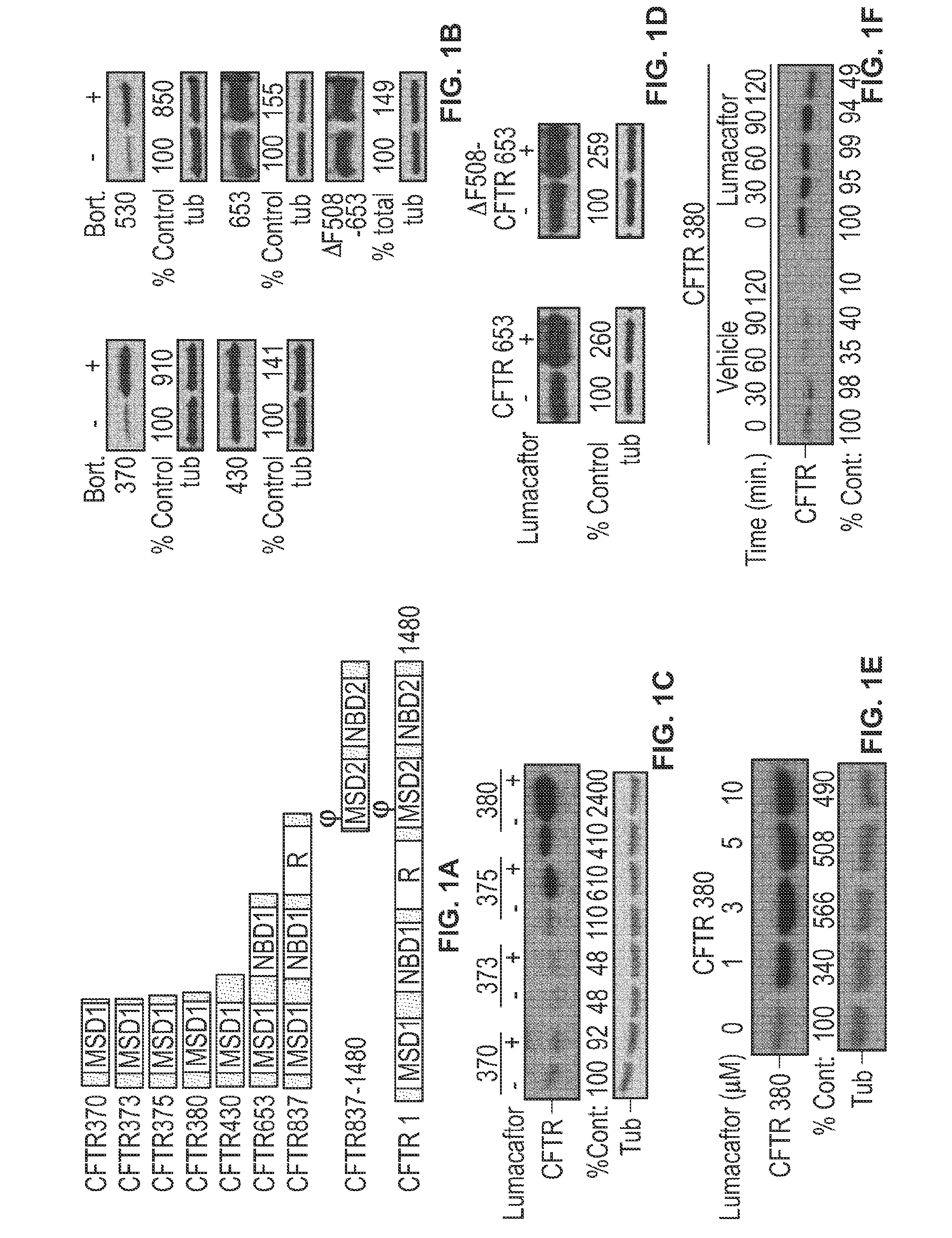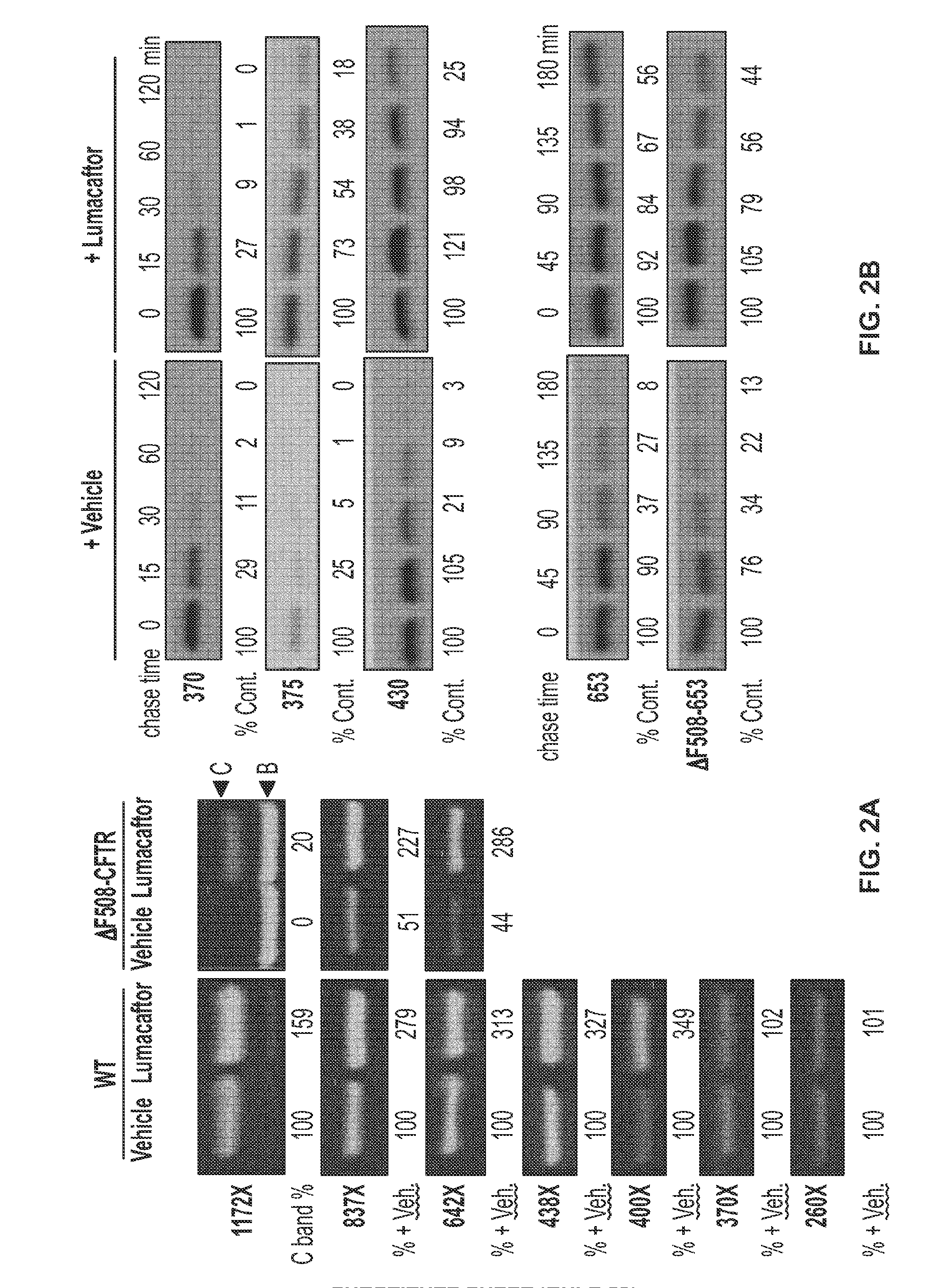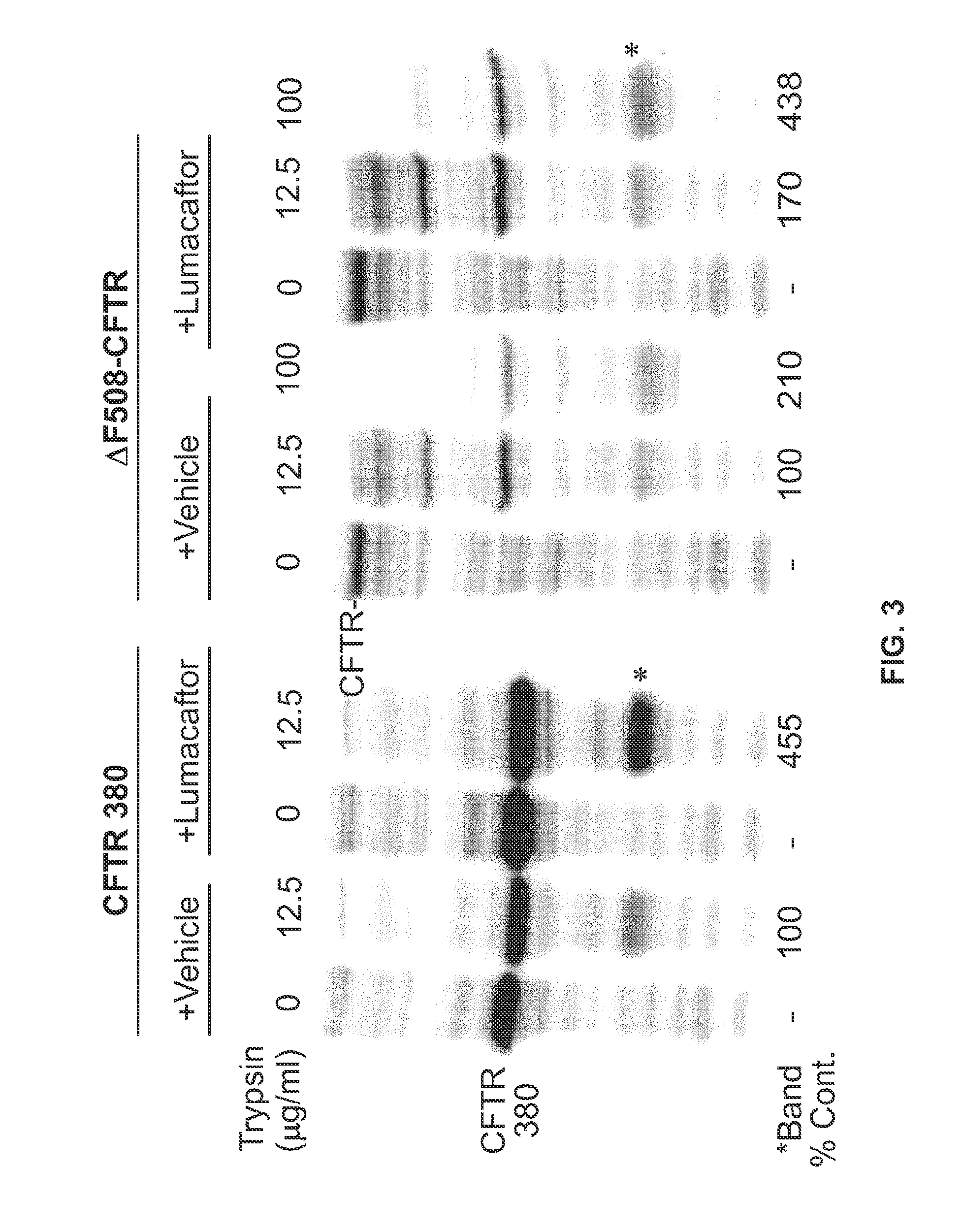Correctors acting through msd1 of cftr protein
- Summary
- Abstract
- Description
- Claims
- Application Information
AI Technical Summary
Benefits of technology
Problems solved by technology
Method used
Image
Examples
example 1
Fragment Analysis
[0180]In order to determine the site of action in CFTR on which a test agent acts, a fragment analysis assay is employed.
[0181]CFTR Mutant Construct Transfection:
[0182]CFTR constructs representing CF-disease causing point mutants or truncated biogenic intermediates (e.g., the MSD1 domain portion of CFTR) are made in the CFTR-pcDNA3.1(+) plasmid using the QuikChange protocol (Stratagene). HEK293 cells from ATCC are maintained in Dulbecco's Modified Eagle's medium (DMEM, GIBCO) supplemented with 1% fetal bovine serum (Hyclone) and antibiotics (100 units / ml penicillin and 100 μg / ml streptomycin, GIBCO) at 37° C. in an atmosphere of 5% CO2. Cell transfections are performed using Effectene reagent (Qiagen). The empty pcDNA3.1(+) vector is used to ensure equal microgram quantities of DNA are used in all transfection reactions.
[0183]Transfected cells are then left untreated or are treated with varying concentrations of the test agent, a positive control agent (e.g., lumaca...
example 2
Profiling Corrector Affinity Using Various CFTR Mutants
[0187]In order to measure the EC50 for a test agent against a panel of CFTR mutations, several assays are utilized.
[0188]Cell Lines:
[0189]To generate a host cell line to express different mutant CFTR forms, a single integration site is introduced into FRT cells (Michael Welsh, University of Iowa, Iowa City, Iowa) by transfecting a construct containing the Flp Recombination Target site (pFRT / lacZeo, Invitrogen, Carlsbad, Calif.). To select stably transfected clones containing pFRT / lacZeo, the cells are grown under 500 μg / ml Zeocin selection in growth media containing Coon's modified Ham's F12, 10% FBS, 1% Pen / Strep, 0.23% Na-Bicarbonate. The clone with the most transcriptionally active genomic locus is selected based on expression of β-galactosidase, which is encoded by the lacZ gene. Single site integration is confirmed by Southern blot.
[0190]The normal CFTR coding region is cloned into the pcDNA5 / Flp recombination target site v...
example 3
ER Export
[0202]In order to assess the effects of a test agent on ER export of mutant CFTR, an assay is performed in which mutant CFTR is trapped in the ER by brefeldin A in the presence or absence of the test agent.
[0203]CFTR Metabolic Pulse-Chase Analysis:
[0204]HEK-293 cells expressing CFTR or ΔF508-CFTR are incubated for 16 hours in assay media (HyQ CCM5 with 1% heat-inactivated FBS) with DMSO, a positive control agent (e.g., lumacaftor) or test agent. For metabolic labeling, cells are starved for 30 min in DMEM without cysteine and methionine with 1% dialyzed FBS in the presence of the candidate corrector agent. Cells are then pulsed with [35S] methionine and cysteine EXPRESS35 label (PerkinElmer) for 15 min. Cells are washed and chased in assay media with test agent or control agent for 0 to 23 hours in the presence and absence of brefeldin A. At each time point, cells are harvested and lysed in RIPA, and CFTR was immunoprecipitated with M3A7 (Millipore). Samples are separated b...
PUM
| Property | Measurement | Unit |
|---|---|---|
| Fraction | aaaaa | aaaaa |
| Fraction | aaaaa | aaaaa |
| Fraction | aaaaa | aaaaa |
Abstract
Description
Claims
Application Information
 Login to View More
Login to View More - R&D
- Intellectual Property
- Life Sciences
- Materials
- Tech Scout
- Unparalleled Data Quality
- Higher Quality Content
- 60% Fewer Hallucinations
Browse by: Latest US Patents, China's latest patents, Technical Efficacy Thesaurus, Application Domain, Technology Topic, Popular Technical Reports.
© 2025 PatSnap. All rights reserved.Legal|Privacy policy|Modern Slavery Act Transparency Statement|Sitemap|About US| Contact US: help@patsnap.com



